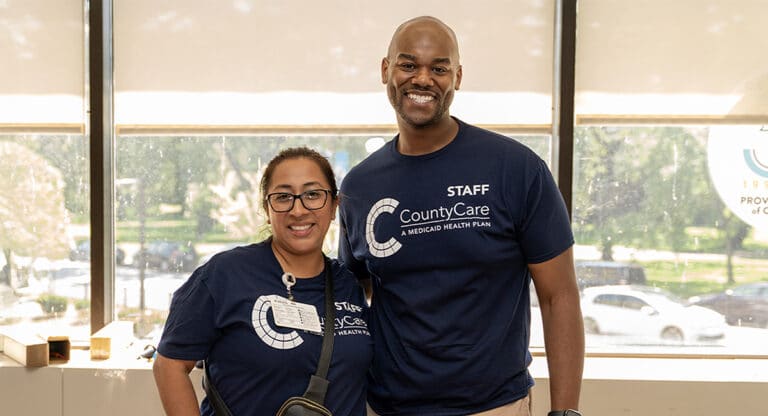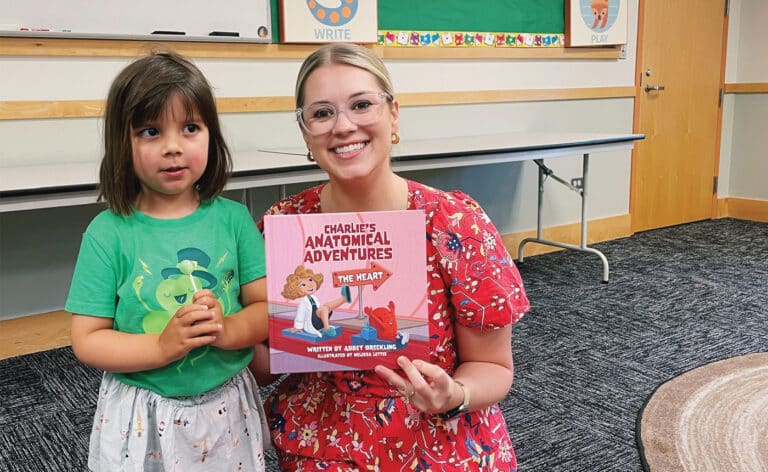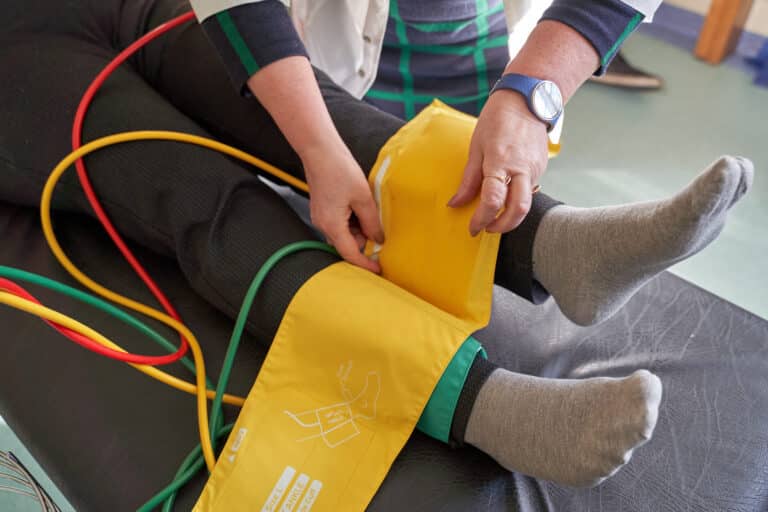The pink ribbon that represents the fight against breast cancer is perhaps one of the most recognizable symbols. But can you name the color of the badge that supports lung cancer?
It’s not surprising if you can’t. The looped ribbon is actually transparent (some have even dubbed it invisible) to underscore a pronounced lack of public awareness regarding the disease, which is more widespread than many of us realize. In fact, lung cancer kills more people each year in the United States than breast cancer, prostate cancer and colorectal cancer combined.
Fortunately, that alarming fact is counterbalanced by news of encouraging breakthroughs in the treatment of lung cancer, which presents as one of two main types: small cell lung carcinoma and non-small cell lung carcinoma. Depending on the cancer’s classification, how far it has spread and a patient’s general health (among other factors), doctors develop a treatment program that may include surgery, chemotherapy, radiation and even drugs. In today’s treatment plans, personalization is the name of the game.
Advances in Surgery and Radiation
The medical field has recently made significant advances in lung cancer surgery. In a traditional operation, surgeons remove the affected lobe (the right lung has three lobes, while the left has two) through a large incision made in the side of the patient between the ribs. Dr. Mark Ferguson, professor of surgery at the University of Chicago Medical Center, says that today, that procedure is being replaced by minimally invasive, video-assisted thoracic surgery (VATS) for early stage cancer cases. “This is a form of personalized therapy that results in less pain, shorter hospitalization and a more rapid return to full activity,” Dr. Ferguson says.
Dr. Malcolm DeCamp, chief of the division of thoracic surgery at Northwestern Memorial Hospital, points out that minimally invasive surgery techniques such as thoracoscopy can be used not just to treat, but also to diagnose. “When we do a thoracoscopy, we can remove [any] nodules and look at the regional lymph nodes at the same time. Then, in appropriate patients, you can remove the lobe of the lung where the cancer is located, and the patient can go home in two to three days,” he says. “If patients need additional therapy, they’re fit and ready for it soon, whereas with conventional surgery, it takes six to eight weeks to recover.” In addition, Dr. DeCamp says, “There is some potential that we might see a lower rate of complications and better long-term outcome with minimally invasive surgery.”
While such techniques are standard at University of Chicago Medical Center and Northwestern Medicine, the methods are not widespread. “Performing video-assisted surgery does take experience, and there is a gradual learning curve. Across the country, only about 10 percent of lobectomies are done by VATS,” says Dr. DeCamp, who is also a professor of surgery. “We spend a lot of time teaching courses to physicians in the region to make these techniques [more widely] available.”
Electronic assistance is also revolutionizing radiation therapy. “In the past, we couldn’t effectively control radiation (which burns tissues), so it spilled over from the targeted cancer and caused complications in the surrounding area,” explains Dr. Irfan Mirza, a medical oncologist with Progressive Care, S.C. “Now, we’ve moved into computer-controlled tomography that can control the amount of radiation, focus the beam effectively and reach places we could never reach before without harming normal tissue.”
New Frontiers: Targeted Drugs
Surgery and radiation may be some of the most publicly recognizable treatments for cancer, but groundbreaking progress is also being made in the development of drugs designed to target specific genetic mutations of tumors and prevent cancer cells from growing and spreading.
“Individualization has become the buzzword of lung cancer in the past year,” says oncologist Dr. Jyoti Patel, assistant professor of medicine at Northwestern University’s Feinberg School of Medicine. “If a patient has a particular genetic marker, we can find the right drug right away. Because of these different mutations, we have now started to break away from treating lung cancer as one disease that has one treatment and are looking at multiple ways to treat it.”
According to Dr. Mirza, a targeted drug is also now available that provides maintenance therapy for lung cancer patients whose tumors have been controlled. “We can now offer them an oral pill that prevents the cancer from spreading, and they can live with it as a chronic disease,” he says.
Such targeted drugs have significant advantages beyond the more obvious plusses (such as patients’ ability to take them at home). “I say that chemotherapy drugs are ‘dumb,’ because they can’t tell the difference between normal cells and cancer cells and [therefore] kill both,” Dr. Mirza says. “But targeted drugs are like silver bullets that only hit the cancer cells, as though they have bull’s-eyes painted on them, without destroying normal ones, making side effects minimal.”
Research and the Road Ahead
As far as lung cancer treatment has advanced, doctors and researchers alike continue to search for ways to enhance both its scope and precision. Dr. Patel is interested in exploring gender differences in lung cancer. “I think we can say that when a woman develops lung cancer, estrogen probably causes the cancer cells to grow. Yet, women live much longer with the disease than men do, and it may be that in the long run, estrogen has a protective effect,” she says. “It is an area that is under study, and the results will help us to understand all lung cancers.”
Dr. Ravi Salgia, director of the thoracic oncology program at the University of Chicago Medical Center, sees patients and conducts research in collaboration with Dr. Ferguson and other lung cancer specialists. Among his many research projects, he is looking for reasons why some, but not all, people who smoke develop lung cancer; trying to identify genetic markers that would indicate which family members are at risk of developing lung cancer; and attempting to develop an inexpensive, easy-to-administer test to detect lung cancer—a particularly important innovation, because in the early stages of the disease, when the survival rate is high, its symptoms are invisible. “That is the Holy Grail that we are trying to reach,” he says.
Considering the last decade’s dramatic breakthroughs, there’s good reason to be optimistic about the future of lung cancer treatment. As researchers continue to study the disease from wide-ranging perspectives, we can hope that someday, a “Holy Grail” will stop the invisible killer in its tracks.
Published in Chicago Health Winter 2010










